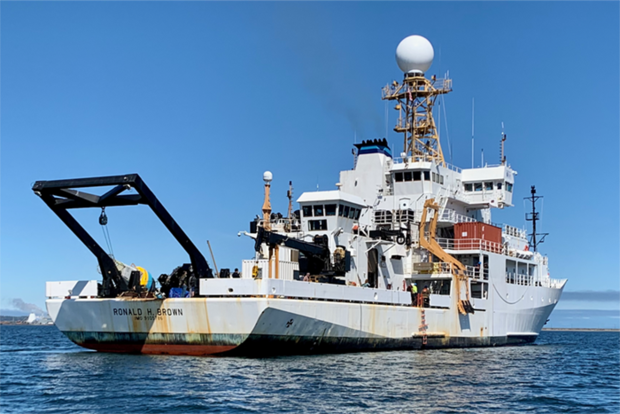Low-oxygen waters off Washington, Oregon coasts risk becoming large dead zones
The NOAA research vessel Ronald H. Brown observed low-oxygen conditions in the Pacific Northwest in 2021. Commercial fishing vessels also collected observations of hypoxic conditions. Credit: NOAA
Oceanic measurements collected during a scientific cruise on NOAA Ship Ronald H. Brown last week confirmed that a large area of poorly oxygenated water is growing off the coast of Washington and Oregon.
Oxygen-depleted bottom waters occur seasonally along the continental shelf of Washington and Oregon when strong winds blowing along the coast in spring and summer trigger upwellings that bring deep, cold, nutrient-rich water to the surface. These waters fuel blooms of plankton that feed small animals like krill, which are food for many marine creatures. When these blooms die off, they sink to the bottom, where their decomposition consumes oxygen, leaving less for organisms such as crabs and bottom-dwelling fish.
Measurements collected by commercial fishermen using dissolved oxygen sensors provided by NOAA’s Coastal Hypoxia Research Program, as well as data from local moorings also show a large area of hypoxic water.
Read more at the link below.
